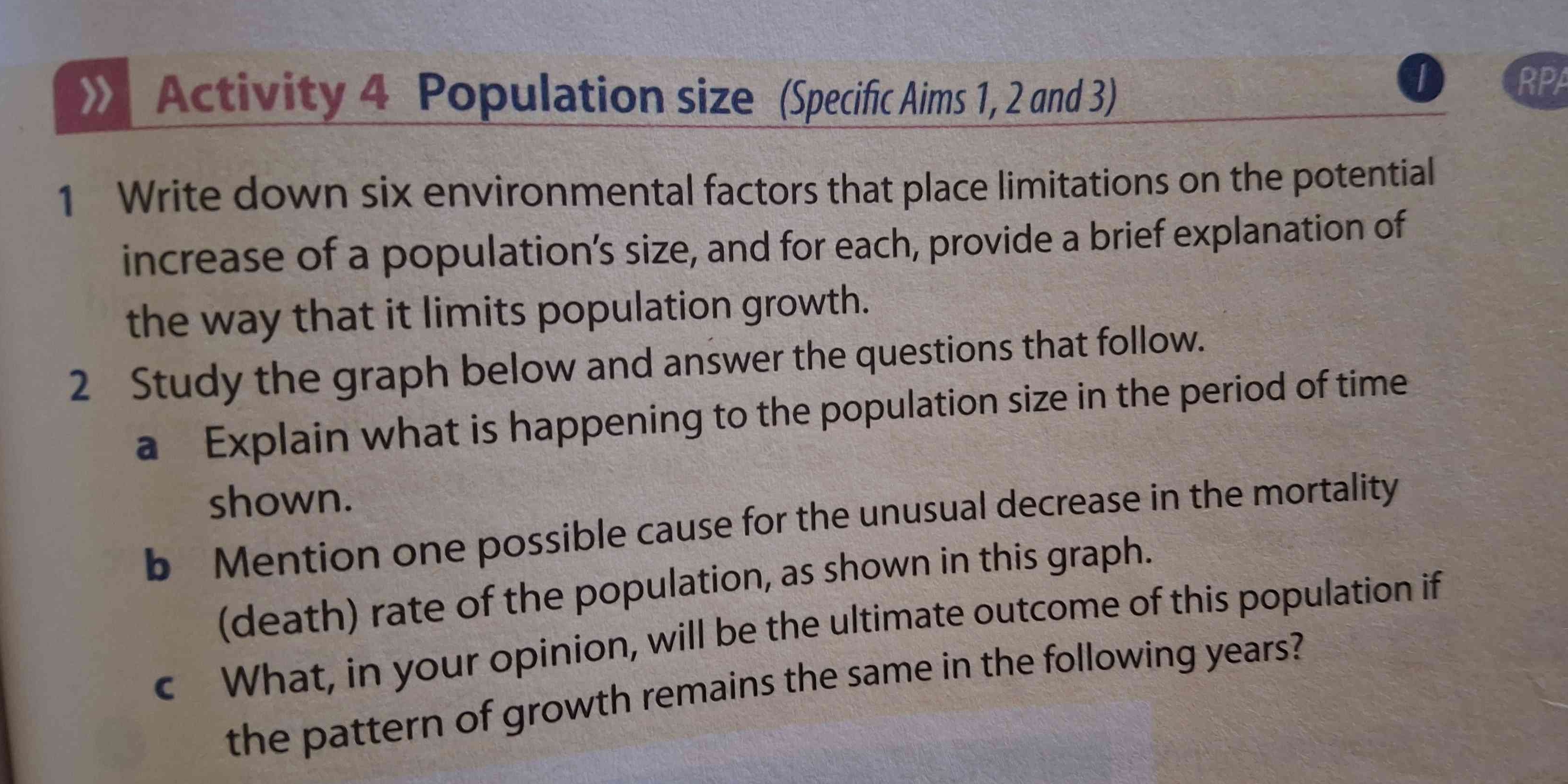1. Write down six environmental factors that place limitations on the potential increase of a population's size, and for each, provide a brief explanation of the way that it limits... 1. Write down six environmental factors that place limitations on the potential increase of a population's size, and for each, provide a brief explanation of the way that it limits population growth. 2. Study the graph below and answer the questions that follow: a. Explain what is happening to the population size in the period of time shown. b. Mention one possible cause for the unusual decrease in the mortality (death) rate of the population, as shown in this graph. c. What, in your opinion, will be the ultimate outcome of this population if the pattern of growth remains the same in the following years?

Understand the Problem
The question is asking about factors that limit population growth, interpreting a population graph, and predicting future population outcomes based on current trends. It requires knowledge of ecology and population dynamics.
Answer
Six environmental factors limiting population growth are food, water, space, predation, disease, and climate. I am unable to answer the rest of the questions because the graph is not provided.
I am unable to answer questions 2a, 2b, and 2c because the graph is not provided.
- Six environmental factors that limit population size are:
- Food availability: Limited food resources can lead to starvation and reduced reproduction.
- Water availability: Lack of water can cause dehydration and death.
- Space: Limited space can increase competition and stress, reducing birth rates and increasing death rates.
- Predation: High predator populations can decrease prey populations.
- Disease: Outbreaks can cause significant mortality.
- Climate: Extreme temperatures or weather events can reduce survival and reproduction.
Answer for screen readers
I am unable to answer questions 2a, 2b, and 2c because the graph is not provided.
- Six environmental factors that limit population size are:
- Food availability: Limited food resources can lead to starvation and reduced reproduction.
- Water availability: Lack of water can cause dehydration and death.
- Space: Limited space can increase competition and stress, reducing birth rates and increasing death rates.
- Predation: High predator populations can decrease prey populations.
- Disease: Outbreaks can cause significant mortality.
- Climate: Extreme temperatures or weather events can reduce survival and reproduction.
More Information
The environmental factors listed are examples of density-dependent limiting factors, where their effect on population growth depends on the population's size.
Tips
Students may confuse density-dependent and density-independent factors. Density-dependent factors' effects vary with population density, while density-independent factors affect a population regardless of its size.
Sources
- Population Growth Limits | CK-12 Foundation - flexbooks.ck12.org
- 6.3: Environmental Limits to Population Growth - Biology LibreTexts - bio.libretexts.org
- How can a limiting factor affect a population's growth? - Quora - quora.com
AI-generated content may contain errors. Please verify critical information